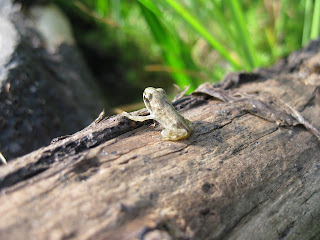Every January, wildlife charity Froglife recognises hard
working and special people with a commitment to helping conserve reptiles and amphibians. Newt Year Honour recipients range from
volunteers to high profile people helping to improve the public image of snakes,
lizards, frogs, toads, newts and other species. Previous honours have gone to Sir David Attenborough,
Stephen Fry, Monty Python’s Terry
Jones, and the creators of Bagpuss
for the magical Gabriel the Toad.
“The Newt Year Honours are a way for Froglife to recognise and
say thank you to people who get behind the amphibian and reptile conservation
cause in a variety of ways,” explains Kathy Wormald, Froglife’s CEO. “The animals are having an incredibly
tough time globally, with more species at risk of extinction than mammals or
birds. They are also often
misunderstood as being scary, slimy, unnecessary or just unlovable. We need all the help we can get in
celebrating and conserving these incredible animals and the part they play in
ecosystems and culture.”
This year, competition was particularly tight with only six
categories of Newt Year Honours.
The winners were selected by Froglife’s senior management team from
nominations by Froglife staff and trustees.
The Young Volunteer award
goes to Peter Tuck, a young person who has been involved in our Froglife Active Conservation Team project. Peter has been giving up his Saturday afternoons to
help young offenders achieve their reparation hours. He enjoyed his woodwork so much with Froglife that he is now
joining the Armed Forces as a carpenter.
The High Profile Person Representing
Amphibians and Reptiles award goes to conservation biologist Dr Kerry
Kriger, who started the American charity Save the Frogs in 2008. Dr Kriger has initiated a global Save
the Frogs day, inspiring people all over the world to celebrate, learn more
about and raise funds to protect frogs and their habitats into the future.
The Volunteer Commitment: Time
and Passion award goes to Ash Jarvis who started on Froglife’s Wildlife Ambassador project in April 2011. Following training through the project, Ash
has surveyed for reptiles and butterflies on Hampton Nature Reserve as well as
completing youth volunteering training and volunteering on both Froglife’s Wildlife
Ambassadors and My Wild Life projects. Ash has volunteered over 200 hours so
far!
The Volunteer in Action: Hands On
Conservation award goes to Jules Howard. Jules started his career in herpetology with Froglife and
has since gone on to set up his own environmental education social
enterprise - The Wildlife Man. Jules is involved with
local toad patrols in Northampton, as well as helping to improve local habitats
for wildlife, supporting schools and inspiring young people.
The Creative Support for Amphibians
and Reptiles award goes to Zamba, a reggae and carnival band based in North
Devon, who got in touch in 2011 to let us know we had inspired a song! Zamba created the fantastic Froglife
song after reading about their local Toads on Roads patrols. The bouncy tune encourages people to
remember the frogs and toads quietly getting on with their lives as we speed
along, and is available to download on iTunes and Amazon with donations from
the proceeds investing in our Tuppence a Toad scheme.
Froglife have also been working
with World of Water Aquatic Stores, and shoppers have been able to get a great
value pond creation kit which includes a Just
Add Water information booklet and free Froglife Friendship. The Watford store received a Newt Year
Honour for encouraging the most customers in their local area to create a
wildlife pond.




